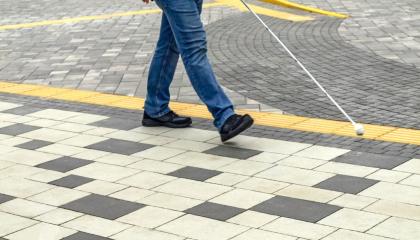Parking lots are often overlooked when considering pedestrian safety, but they are busy areas with constant interaction between vehicles and pedestrians. This interaction can be hazardous, especially for individuals with visual impairments. Ensuring that these environments are safe and accessible for everyone is not just a legal requirement but a moral imperative. Detectable warning surfaces (DWSs) are worthwhile in achieving this goal, providing necessary cues to navigate these spaces safely.
At StrongGo, we aim to enhance urban accessibility with high-performance tactile warning surface indicators (TWSIs
When it comes to transportation, people prioritize convenience. Whether taking a two-hour flight instead of a ten-hour drive or utilizing public buses rather than walking, convenience drives pedestrians’ and commuters’ decisions.
In higher education, accessibility is the bridge that turns obstacles into opportunities for students with disabilities, ensuring no one is left behind on the journey to knowledge. No longer confined to physical spaces, accessibility encompasses many dimensions, including physical, digital, and socio-economic factors.
In the realm of public safety, every detail matters. From bustling city sidewalks to expansive transportation hubs, ensuring the safety and accessibility of public spaces is incredibly important.
Independent living is a life-altering experience that allows for self-growth. By implementing Universal Design (UD) elements into public and private spaces, the opportunity to live independently expands for individuals with disabilities.
Nearly fifty years after Section 504 of the Rehabilitation Act went into effect, Americans with disabilities are still fighting for the same rights and opportunities as their peers. Health disparities affect minorities across America every day.
Whether exploring the heart of a city, strolling through a renowned park, or navigating a new transportation system in an uncharted environment—these experiences define our adventures when traveling abroad. For the disabled community, these encounters can present unique challenges in urban landscapes, restricting them from the joys of venturing into new places. Yet, globally, strides are being made to create inclusive environments by successfully implementing tactile walking surfaces.
Urbanization is rising worldwide, with more people moving to cities than ever before. While this brings numerous opportunities and advantages, it also poses significant challenges.
Pagination
Connect with us
We pride ourselves on our customer service, and we'd love to hear from you! Sign up for our newsletter to keep up with industry updates and trends, as well as any new product releases.












